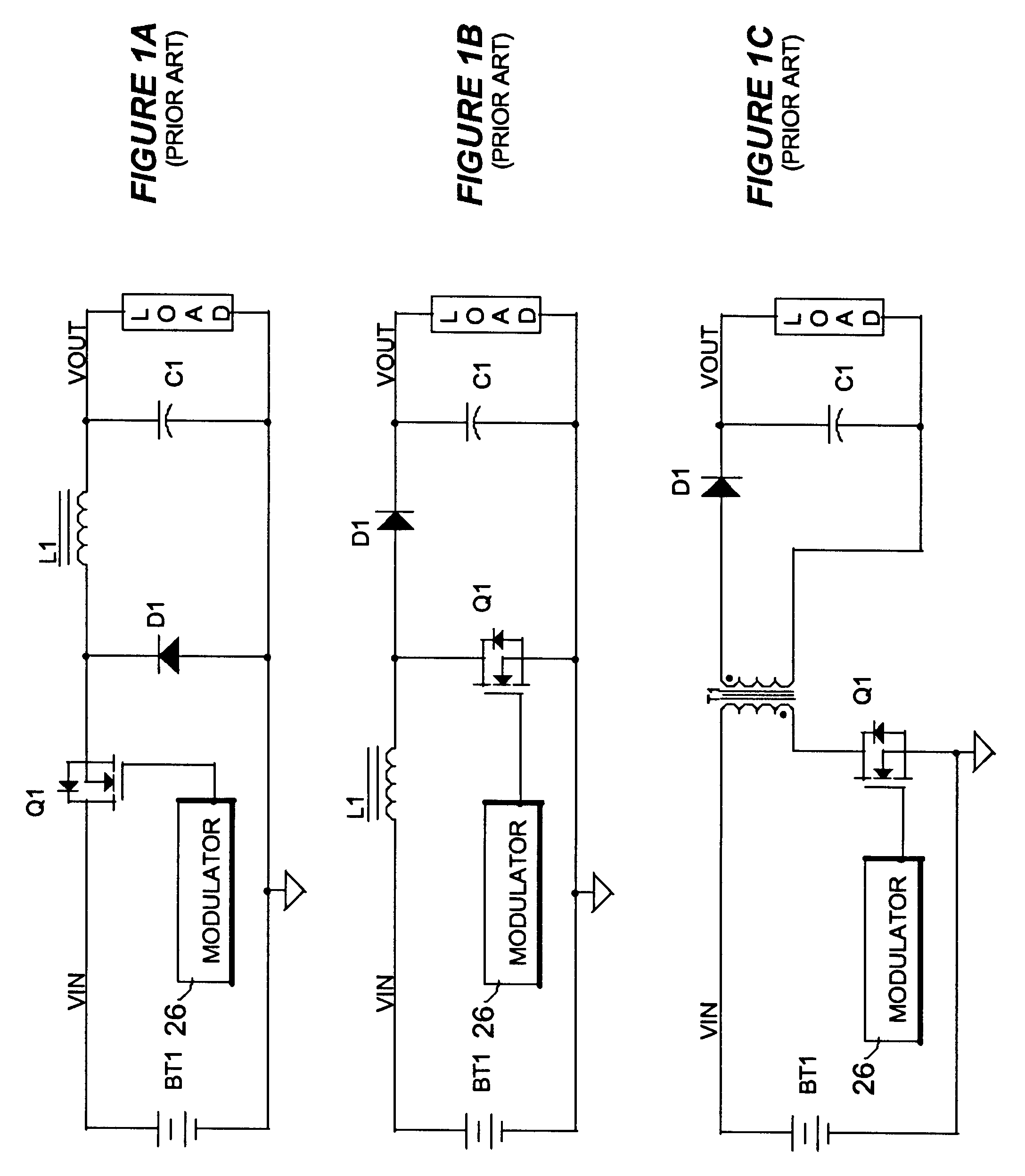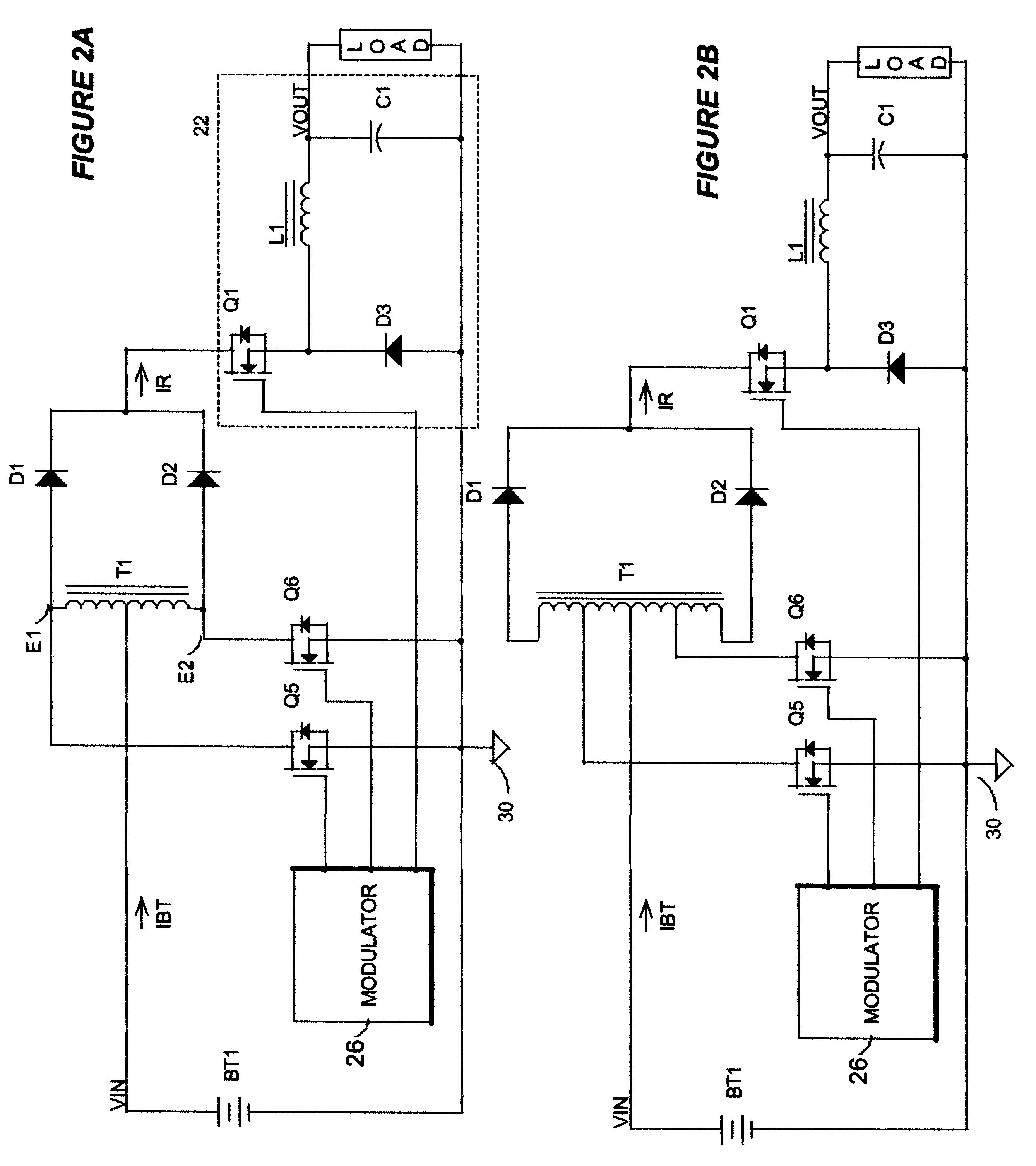Switch-mode power supplies
a power supply and switch-mode technology, applied in the field of switch-mode power supplies, can solve the problems of high loss in the mosfet switch and in the snubber network, 5 watts of heat dissipation in the rectifier, and may not be easily met, and achieve the requirements of high efficiency, small size and low cos
- Summary
- Abstract
- Description
- Claims
- Application Information
AI Technical Summary
Problems solved by technology
Method used
Image
Examples
Embodiment Construction
The invented arrangement in a first embodiment, FIG. 2A, comprises a center-tapped transformer T1 operated in push-pull mode. The transformer T1 is driven by a pair of push-pull switches Q5 and Q6, which are preferably MOSFETs, but which can be any other sort of electronic switch known to those skilled in the art, such as a bipolar transistor, an IGBT. However its similarity to a push-pull SMPS stops there. The two end taps E1 and E2 of the center-tapped transformer T1 now are connected to rectifiers D1 and D2 driving a buck converter 22, which is driven synchronously by the same modulator 26 which drives the push-pull switches Q5-Q6. The conventional buck converter 22 comprises a switch Q1, a rectifier D3, and a current smoothing L1, and optionally a capacitor C1. The modulator 26 can be a pulse-width modulator (PWM), a pulse-frequency modulator (PFM), a hysteretic modulator etc . . . . This invented circuit arrangement has a voltage gain of 2 times the duty ratio D of the push-pul...
PUM
 Login to View More
Login to View More Abstract
Description
Claims
Application Information
 Login to View More
Login to View More - R&D
- Intellectual Property
- Life Sciences
- Materials
- Tech Scout
- Unparalleled Data Quality
- Higher Quality Content
- 60% Fewer Hallucinations
Browse by: Latest US Patents, China's latest patents, Technical Efficacy Thesaurus, Application Domain, Technology Topic, Popular Technical Reports.
© 2025 PatSnap. All rights reserved.Legal|Privacy policy|Modern Slavery Act Transparency Statement|Sitemap|About US| Contact US: help@patsnap.com



